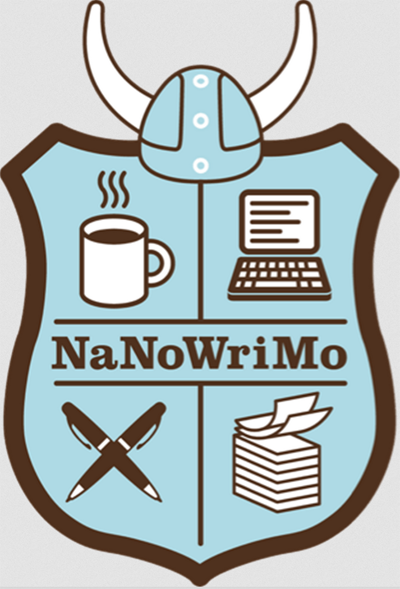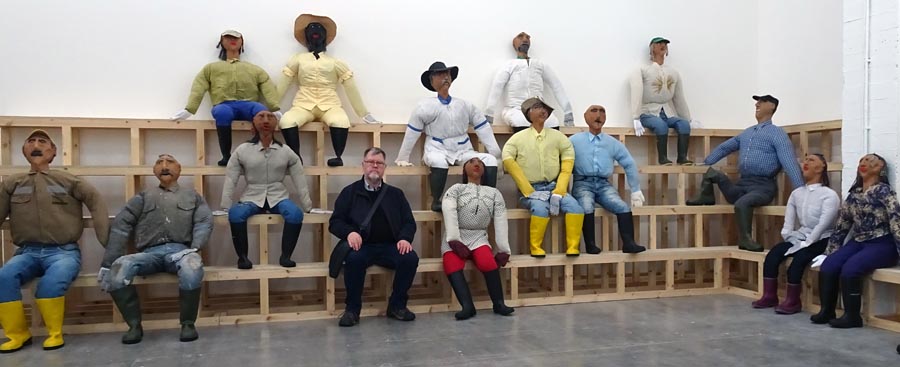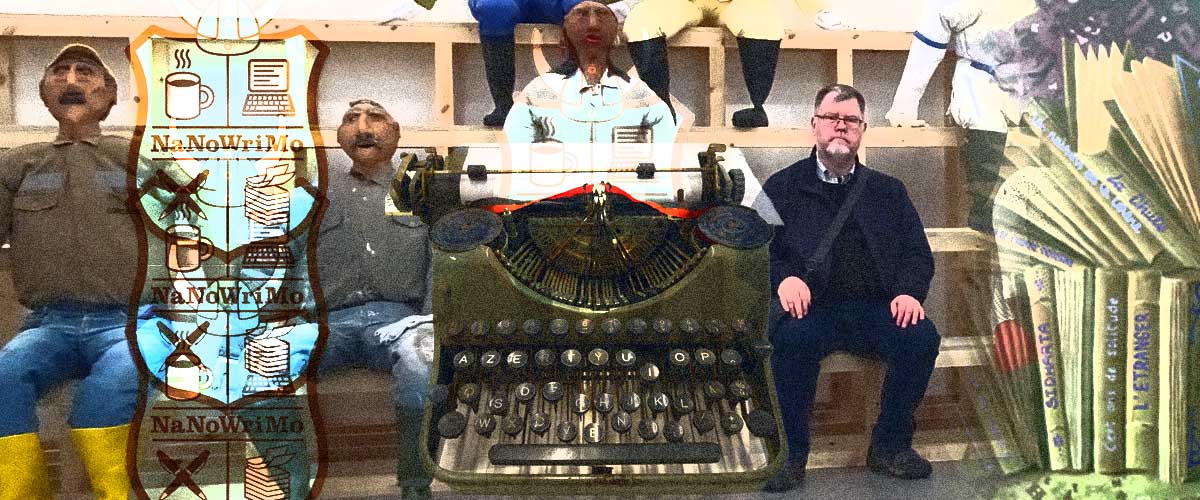
NaNoWriMo is National Novel Writing Month. It should be InterNational NoWriMo, but I’ve worked that seam before. (Here, if you’re interested.) I’ve found NaNoWriMo difficult in the past and given up, but this year maybe things will work out. One change that may make a difference is discovering that preparing in October for NaNoWriMo November is a thing. It even has a name: Preptober. Advice for Preptober I have seen on YouTube and in other blog posts often involves “the 5 Ps” and “GAPS”.
The 5 Ps: Protagonist & Plot points
One piece of advice is to “know your Protagonist“. I guess it’s no bad thing to have developed some idea of at least the main secondary characters too.
I’m on fairly solid ground here. I’ve been interrogating my protagonist and this story’s two or four other p.o.v. characters for a year and a half now. I’ve built up a good body of back story for them all and for several other key characters.
A second piece of advice is to “have an outline of your plot points“. In NaNoWriMo, you want to be able to write on fast. Having your plot points mapped out – or at least the key turns and the crisis (crises) – will help the forward motion.
I’m going to be working in Scrivener and have just completed outlining the story in a Scrivener document, broken down in terms of John Yorke’s Five Act structure. The action of the main story takes place mostly over a 24 hour period, so I have sections called Morning, Afternoon, Evening, Night, The Next Day. Those titles may change, but for now they’ll help me keep my chronology straight. Between them are breakout sections following a subplot, and there’s a Prologue. (Because the first breakout section was deemed too slow to stand at the beginning of the novel at the Literary Idol session of the SWF23.)

The 5 Ps: PoV & Place
It’s practical and saves time to have decided in advance on the point of view and the tense you are going to use. For me, I’ve already decided to tell the story from two or three (or four) close third person points of view. The admonition about tense is more relevant. I find it fatally easy to drift from simple past into simple present in the space of the same paragraph. To be sure, it’s something you can adjust after the fact, but that takes time. Better to try to get it right from the beginning.
You need to know the place or places where your story is playing out. I suppose this can be as detailed as a photograph or a map, but it might be a sparse as the stage setting for a play by Becket. As long as you know what the places look like where your characters are going to be acting out the story. Because my story is set in a distant future (about 500 years from now), it’s also important for me to have a developed idea of the world that underpins the society my characters live in.
The 5 Ps: Pitch
Pitch is the final P. Not the tone of the story, but shorthand for creating a sentence summary of the whole story. The term comes from the concept of an “elevator pitch”, a compressed version of your story such that you could repeat it to wow a hypothetical publisher or literary agent in the time it takes you to travel with them in a lift.
I get very edgy about this marketing cliché. I want to know how long the elevator journey is. Where it is. I mean are we talking Empire State Building ground floor to observation deck? Or are we talking hotel reception to second floor of the Radisson in down-town Bookapolis? I need to know.
No, I don’t need to know. The idea is to have a summary of your story to refer to in order to keep yourself on track as you write. Put that way it makes more sense to me. I wrote one in 73 words and only one sentence, thanks to a judicious use of punctuation. (Then, just for the hell of it, I read it to myself alone in the lift, travelling from my 8th floor flat down to the ground floor. I just managed to complete the reading before the doors opened on one of my neighbours looking mystified.)

GAPS: Goals, Accountability, Process, Success
This second block of advice is to do with one’s reasons for working with NaNoWriMo rather than the story one is writing. In many ways these are more important for me, I think, so I am couching them in the first person.
Goals
I need to be clear about my objectives. What am I hoping to get out of taking part in NaNoWriMo?
- I want to use the month to explore a writing rhythm and find a routine that suits me and the task.
- I intend to use any means I can to get the words down and into the manuscript – longhand, typing, dictation, recording and transcribing.
- I want to oblige myself to write on without editing more than during the daily process of working with the words for that day. No going back to edit earlier days’ production until the month is up. (This is, I know, one of my weaknesses.)
- I hope to overcome my fear of November depression. (After years of struggling with seasonal affective disorder, I have got into the mind-set that I might as well bury my head in my bedclothes for most of November. Enough with that!)
- I shall attempt to keep the following discipline of words/day and words/month targets.
- Minimum: 833 words/day = 25,000 words in the month
- NaNoWriMo: 1667 words/day = 50,000 words in the month
- Stephen King turbocharged: 2500 words/day = 75,000 words in the month
- By the end of November, I hope to have a complete or nearly complete first ‘zero’ draft of the novel. (Something I’ve never achieved before.) Whether it is 50,000 words long (a win according to NaNoWriMo rules) or only 25,000 words – my minimum – doesn’t really matter. A “win” would be nice though.

Accountability
- I’m writing this post now before the month starts. I’ll follow up with a second after the end of November to report what happened. (It’s possible I won’t write any blog posts during November while I focus on NaNoWriMo.)
- I’ll post daily reports (after midday) on my Facebook and Mastodon accounts.
- I shall post weekly reports on Instagram and in the NaNoWriMo23 forum of my writers’ group Pens Around the World.
- I’ve registered with the NaNoWriMo website and chosen my regional group (Europe::Sweden::Göteborg) and I’ll update my daily progress there too
- Mrs SC has promised to chivvy me along as well.
Process
- I’ll write in the mornings. (It’s my most productive time of the day.)
- I’ll aim to write in bursts of 45 minutes. (From experience two or three of these can see me to the daily NaNoWriMo target.)
- I’m going to deny myself social media, news, e-mails and YouTube before I hit the minimum daily word target or reach midday, whichever comes first. (This will be one of the hardest restrictions to keep to – but there’s the promise of a reward in the afternoon.)

Success
How to measure success? I will have succeeded if I achieve any of my goals (thought preferably more than one) by the end of November. If I and achieve a NaNoWriMo win (50,000 words written), that would be nice, but isn’t necessary for me to feel successful. (He says now.)
The book
My novel’s working title is Luce in New Lundon. Here’s the summary sentence. (OK, “the pitch“.)
In a future where human societies exist in an arrested stage of technological development overseen by machine intelligences, Luce Tollymoor, a twenty-something student of agriculture, her future more or less mapped out, is explosively rerouted by the events of one day; with the assistance of friends and unexpected allies, she escapes political upheaval to go on the run, save herself and her community, and discover the true history of the world she lives in.




